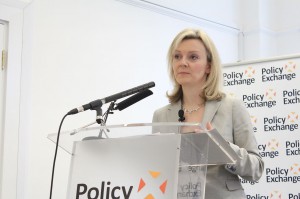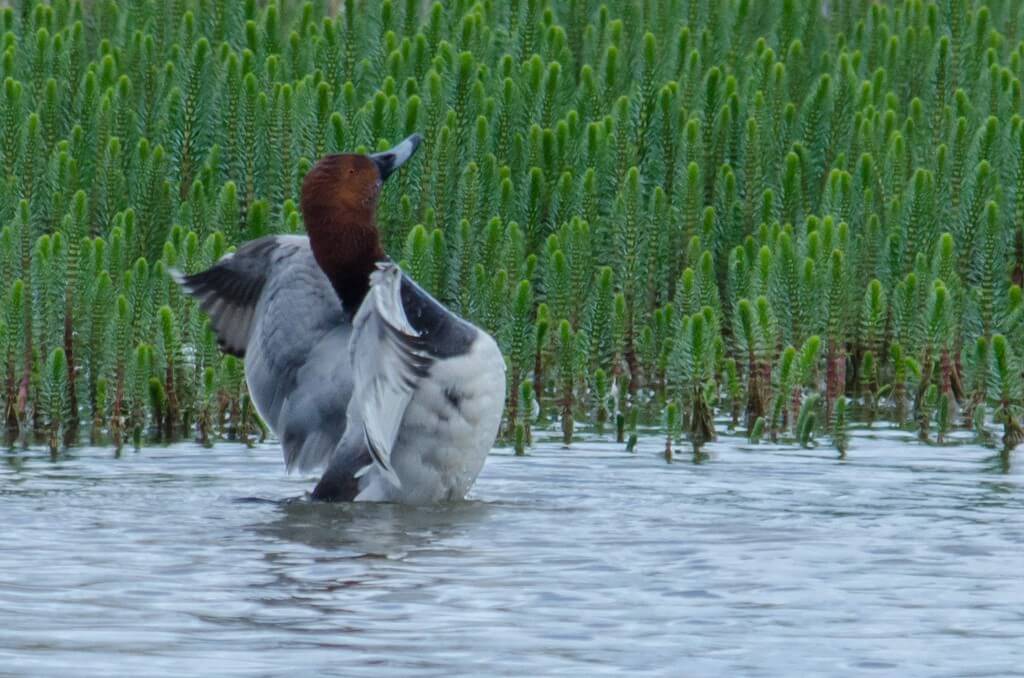
Photo: Policy exchange via wikimedia commons
In a slightly shocking move last week (though I am not easily shocked) Liz Truss (formerly of Defra) announced she was not taking any notice of the report of the Lead Ammunition Group report (now published in full).
She announced this after sitting on the report for 14 months, on the day a PM resigned and another was appointed.
One of her reasons was that there wasn’t any evidence of a population impact of lead in the report. Well there is plenty of evidence of impacts that would be likely to have a population level effect in the report but more importantly, Defra knew perfectly well that a paper giving such evidence was about to be published – and now it is.
 You can read the abstract online but you can also pay, as I have, $6 (plus tax!!), to get the whole darn shooting match.
You can read the abstract online but you can also pay, as I have, $6 (plus tax!!), to get the whole darn shooting match.
The study looks at a range of duck species (eight species) which differ in their population trajectories (1990-2013) and differ in the amount of lead that they typically ingest (using either of two measures). It looks like a decent study.
Guess what? Those species with high lead ingestion rates are declining whereas those with low ingestion rates are increasing.
Look at Table 1 and Figure 2 to get the clear view of what’s happening (either by waiting until your, or your library’s copy of Ibis arrives or buy a 48 hour view of it if you can’t wait). All this was made available to Defra ahead of Truss’s misleading announcement.
The species declining the most, and globally threatened these days remember, is the Pochard, which has the highest lead ingestion rate. Go figure!
[registration_form]

You paid how much?!! Have M&S started selling papers now?
“The Sci-Hub project works to fight inequality in information access across the world. The goal is to dismantle all barriers to knowledge distribution. Our vision is the world without paywalls, where any piece of knowledge can be accessed freely by any person”
It’s a bit annoying that this paper isn’t open access. I tweeted @WileyOpenAccess to ask if they’d waive OA fees for charities, but I guess the answer will be ‘no’, or just not forthcoming.
Ben – I think it will be open access when it is actually published on paper in the journal – not sure. The whole business of access to science is unsatisfactory. Yet another thing we could spend our £350m/week on when we leave the EU (if only it existed).
Horses, water
It’s rare I see a Pochard these days, compared with several years ago when they would turn up regularly on my local expanse of water.
Angling banned lead many years ago so it’s high time that shooting followed suit.
In January this year the BTO’s Webs counters were asked to record the male/female ratio of pochard in their count areas. That is probably why, a substantial decline in their numbers.
There is more than a little irony in the fact that the woman who (obviously deliberately) ignored clear scientific evidence has now been appointed Minister of Justice. Not just any old irony, but Orwellian irony; I hope everybodys got their seatbelts fastened, the next few years are going to be a very bumpy ride…
Mark
On the issue of open access to journal papers of significance for bird conservation, you would have thought that if:
i) the RSPB, University of Cambridge and WWT (the authors’ affiliations, Rhys clocking up two) thought that the issue of lead poisoning of wildfowl were really important; and
ii) that raising the active birding communities awareness of the issue were also important (so that they might for instance sign an e-petition – not that I think one is open at the moment – or perhaps contact their MP)
Then they would have made sure that Ibis published this paper as open access. I note that you think they might. My experience with Ibis is that if a paper is intended to be open access then the ‘accepted article’ version is also open access.
I do note though that it will cost the authors, or their employers US$3,000 (the direct quote from the Journal’s ‘FundedAccess’ web page is “The cost for OnlineOpen is US$3,000, which can be paid by the author, the author’s funding agency, or the author’s institution.”). Clearly the ‘funding agency’ for the RSPB and WWT is you and I, so I suggest if anyone coughs-up-the-dosh it is the University of Cambridge – annual income £1,638,000,000, yes you read that right, £1.6 billion (from:Reports and Financial Statements for the year ended 31 July 2015). Incidentally, £1.6 billion is roughly equivalent to the annual GDP of Liberia.
The alternative of course is that one of the authors places the ‘author copy’ version on their personal or employers web site. Maybe we should start checking here: http://www.zoo.cam.ac.uk/directory/rhys-green A good start is that you can access the document “Wildlife and Human Health Risks from Lead-Based Ammunition in Europe: A Consensus Statement by Scientists” from here.
Regards
Roger Buisson
A quick reassurance to Roger Buisson. Be patient. Mark is right in his earlier comment. I have already arranged that the paper about ducks and lead will be published open access and it will be free to access once it is published online in a few weeks. The version online at the moment is the pre-publication accepted manuscript and (I think) we did not have an option to make it open access in the short time before it turns into the “real” paper. In the meantime, if you want to read a lot of science about the effects of lead ammunition for free, simply google “Oxford Lead Symposium”.
Rhys – many thanks